When the first frost warning hits, many gardeners rush to harvest whatever they can before their crops freeze. But not all vegetables are fragile. In fact, some thrive in chilly weather, using the cold to enhance their flavor and texture. Knowing which vegetables can survive frost—and even prefer it—means you can extend your growing season and enjoy fresh produce long after summer has ended.
Here’s a detailed look at eight frost-tolerant vegetables that deserve a spot in your fall and early winter garden, along with tips on how to help them thrive when temperatures drop.
Why Frost Isn’t Always the Enemy
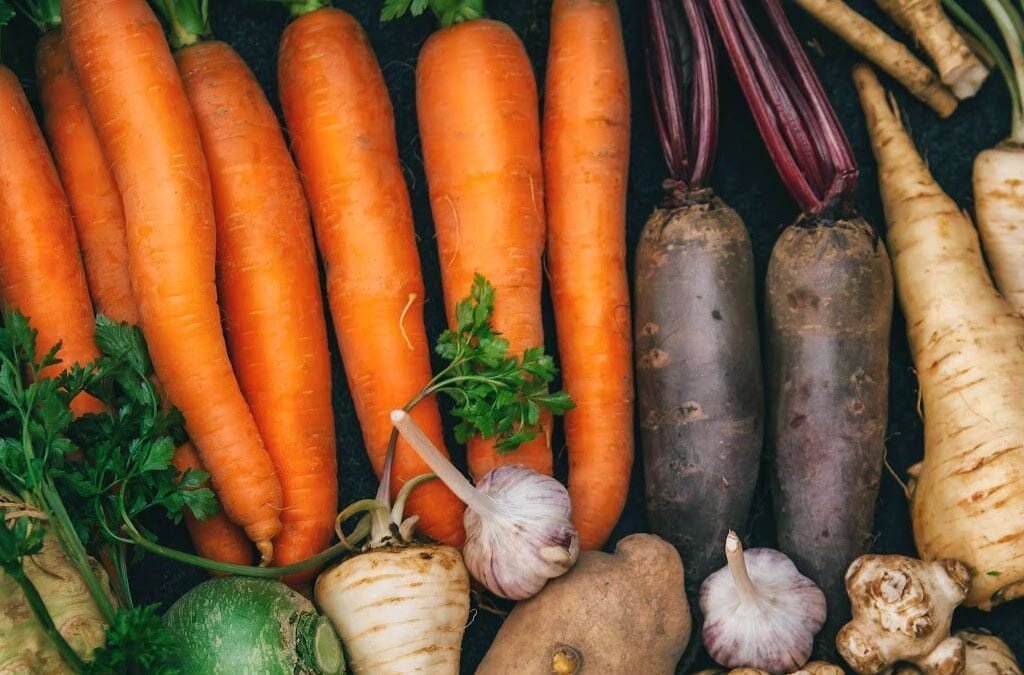
Before we get into the vegetables themselves, it’s important to understand why certain plants handle frost better than others.
When temperatures dip below 32°F (0°C), frost forms as water vapor freezes on leaves. Tender, warm-season plants (like tomatoes and peppers) can’t handle this—they blacken and die. But cool-weather crops, especially those in the brassica (cabbage) and root vegetable families, have adapted to survive these cold snaps.
Many of them contain natural sugars that act like antifreeze, lowering the freezing point of their cell sap. This process not only keeps the plants alive but often makes them sweeter after frost exposure.
1. Kale (Brassica oleracea var. sabellica)
Frost Tolerance: Extremely hardy — survives temperatures as low as 20°F (-6°C).
Kale is the undisputed champion of the cold-weather garden. As the temperature drops, kale converts starches into sugars, making its leaves tender and noticeably sweeter. Many gardeners even wait until after the first frost to harvest for the best flavor.
Growing tips:
- Planting time: Late summer for fall and winter harvest.
- Soil: Rich, well-drained soil with good organic matter.
- Protection: A light mulch or row cover helps extend its life through snow and frost.
Bonus: Varieties like ‘Winterbor’ and ‘Red Russian’ are especially cold-resistant.
2. Carrots (Daucus carota subsp. sativus)
Frost Tolerance: Can survive down to 15°F (-9°C) with mulch protection.
Carrots are another vegetable that gets sweeter after frost. The cold causes sugars to concentrate in the root, improving flavor and texture.
Growing tips:
- Planting time: Late summer or early fall for overwintering.
- Soil: Loose, deep soil to encourage straight roots.
- Protection: Add a thick layer of straw or shredded leaves once frost begins—this keeps the soil from freezing solid, allowing you to pull fresh carrots even in winter.
Bonus: Leave carrots in the ground and harvest as needed—they’ll store naturally until early spring.
3. Brussels Sprouts (Brassica oleracea var. gemmifera)
Frost Tolerance: Can handle temperatures down to 20°F (-6°C).
Brussels sprouts actually need a few frosty nights to develop their best flavor. The cold converts starches into sugars, cutting their natural bitterness and giving them a delicious nutty sweetness.
Growing tips:
- Planting time: Start seeds indoors in midsummer, then transplant outdoors 90–100 days before your first frost.
- Soil: Fertile and evenly moist.
- Protection: A layer of mulch at the base helps prevent soil freezing and keeps roots stable.
Pro Tip: Harvest from the bottom up as sprouts mature—the upper ones continue growing even as frost sets in.
4. Spinach (Spinacia oleracea)
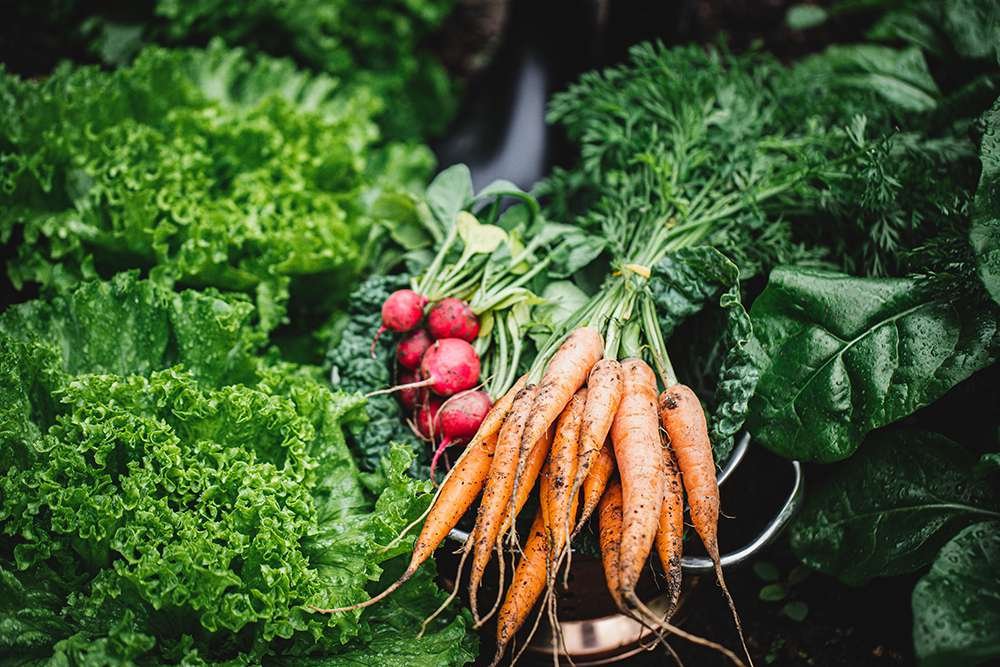
Frost Tolerance: Survives down to 15°F (-9°C); can overwinter under cover.
Spinach is one of the hardiest leafy greens, capable of growing right through light snowfalls. When protected by a cold frame or hoop house, it can continue producing into winter.
Growing tips:
- Planting time: Sow seeds 6–8 weeks before your first expected frost.
- Soil: Moist, fertile soil with good drainage.
- Protection: Apply mulch or row covers during extreme cold to prevent frost burn on leaves.
Bonus: Fall-planted spinach often regrows in early spring as soon as the ground thaws, giving you a jump-start on the new season.
5. Cabbage (Brassica oleracea var. capitata)
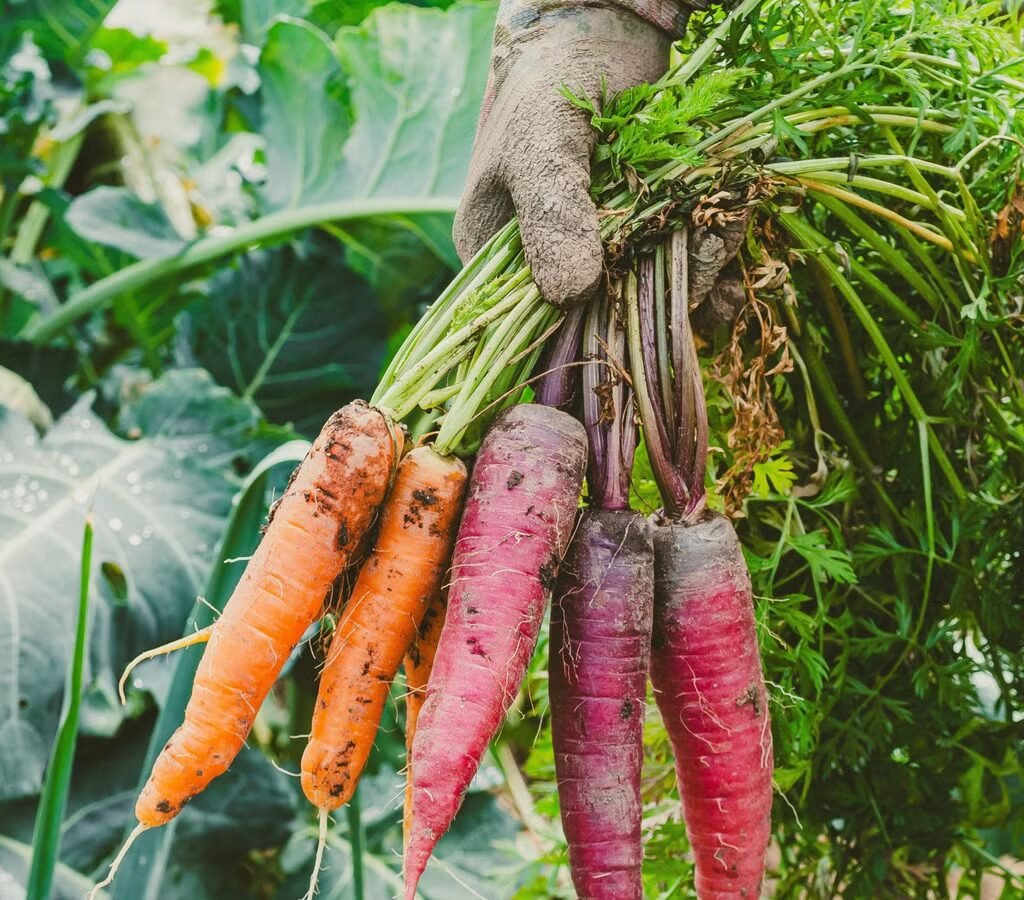
Frost Tolerance: Can survive temperatures as low as 20°F (-6°C), sometimes even 15°F (-9°C).
Cabbage’s dense heads and waxy leaves make it a natural cold-weather survivor. After a few frosty nights, the flavor of cabbage actually improves, becoming milder and sweeter.
Growing tips:
- Planting time: Mid to late summer for fall harvest.
- Soil: Well-drained, fertile soil rich in organic matter.
- Protection: Apply a 2–3 inch mulch layer around the base to insulate roots.
Pro Tip: Late-season varieties like ‘January King’ or ‘Savoy’ can even survive under snow if well-mulched.
6. Beets (Beta vulgaris)
Frost Tolerance: Survive light frosts down to 28°F (-2°C); roots tolerate colder temps with mulch.
Beets are surprisingly tough. While the leafy tops may suffer during hard frosts, the roots beneath the soil remain well-protected and can continue growing as long as the ground doesn’t freeze solid.
Growing tips:
- Planting time: Late summer or early fall for a late harvest.
- Soil: Loamy and loose; avoid compact soil to prevent misshapen roots.
- Protection: Mulch heavily with straw or leaves to insulate the roots.
Bonus: Like carrots, beets get sweeter after frost exposure due to sugar concentration in the roots.
7. Broccoli (Brassica oleracea var. italica)
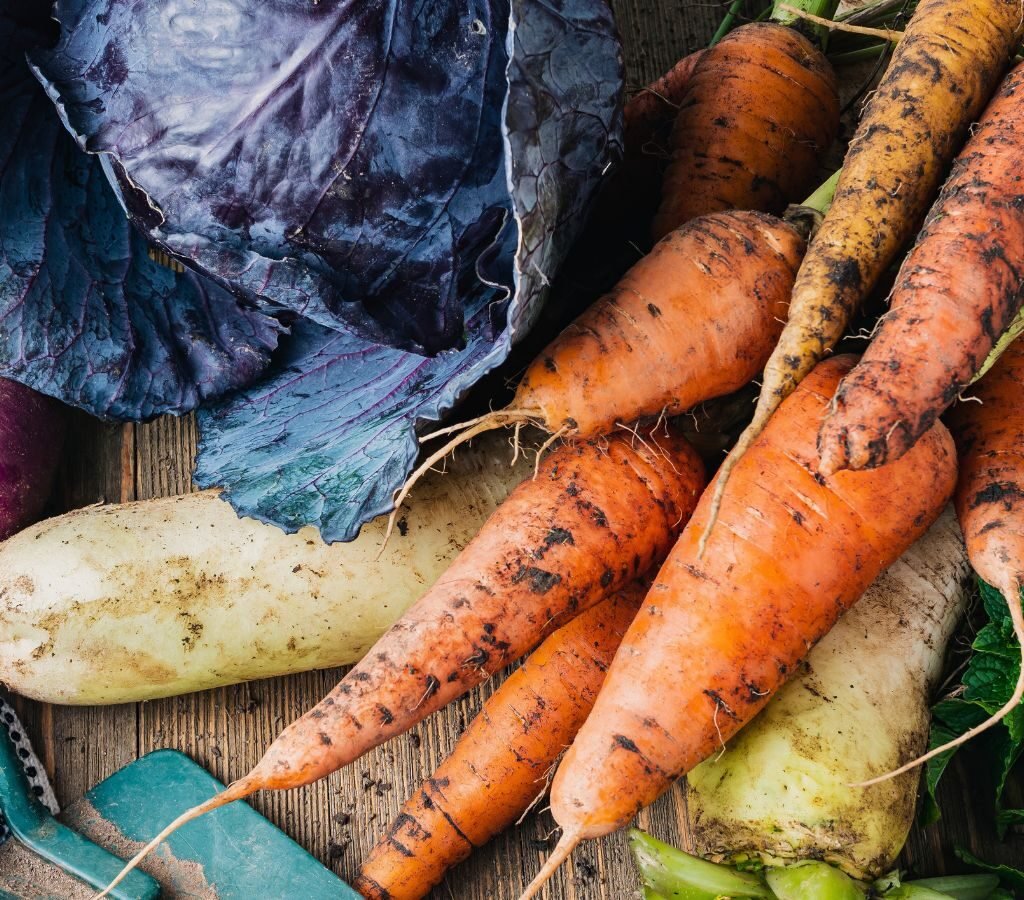
Frost Tolerance: Can withstand down to 25°F (-4°C) without damage.
Broccoli is another cool-season favorite that thrives in chilly air. In fact, hot temperatures can cause it to bolt (flower too soon), but cool conditions encourage compact, flavorful heads.
Growing tips:
- Planting time: Start in midsummer for fall harvests.
- Soil: Fertile and evenly moist with plenty of compost.
- Protection: Mulch around the base to retain warmth and moisture.
Pro Tip: If frost kills the main head, side shoots will often continue producing tender florets well into early winter.
8. Parsnips (Pastinaca sativa)
Frost Tolerance: Extremely hardy — can survive down to 10°F (-12°C).
Parsnips are perhaps the sweetest of all frost-tolerant root crops. Like carrots, they use cold weather to convert starches into sugars, producing a sweet, nutty flavor that’s at its best after multiple frosts.
Growing tips:
- Planting time: Early spring or midsummer for a late fall harvest.
- Soil: Deep, stone-free soil is ideal for long roots.
- Protection: Mulch with straw or leaves if you plan to leave them in the ground through winter.
Bonus: Parsnips can be left in frozen ground and harvested in early spring as soon as the soil thaws.
Tips for Protecting Frost-Hardy Vegetables
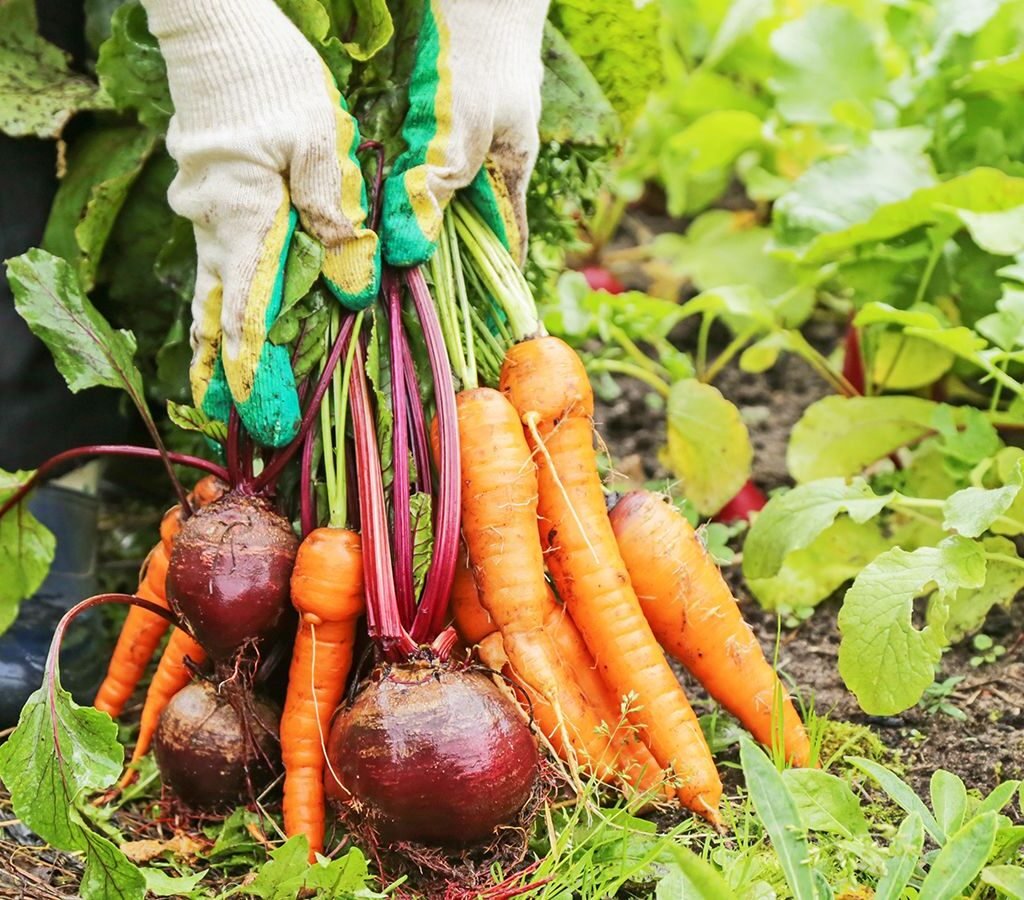
Even frost-tolerant crops appreciate a little protection during deep freezes. Here’s how to help them survive and thrive:
- Mulch generously: Use straw, shredded leaves, or compost to insulate the soil and stabilize temperatures.
- Use row covers or cold frames: Lightweight fabric or mini tunnels trap warmth and protect against windburn.
- Water before frost: Moist soil holds more heat than dry soil, reducing root freeze risk.
- Harvest strategically: Pick leafy greens before a hard freeze, but leave root crops in place—they’ll sweeten as temperatures fall.
- Don’t panic about light frost: A light layer of frost can actually improve flavor in many crops.
Planning a Frost-Friendly Garden
If you want a garden that produces beyond summer, focus on succession planting and cold-hardy varieties.
For example:
- Sow spinach, kale, and beets in late August or September for fall and winter harvests.
- Add parsnips and carrots early enough that roots mature before deep freezes.
- Choose cold-hardy cultivars—look for terms like “winter,” “frost-tolerant,” or “cold-hardy” on seed packets.
You can even pair these crops in raised beds with frost covers to extend the harvest season into December or beyond, depending on your climate.
Final Thoughts
Frost doesn’t have to mark the end of your growing season—it can be a new beginning for a hardier, sweeter harvest. Vegetables like kale, carrots, and parsnips not only endure cold weather but also reward you with richer flavors and improved textures that summer heat can’t replicate.
By choosing the right varieties, planting at the right times, and providing simple frost protection, you can turn your late-season garden into a thriving source of fresh food when everyone else’s beds are bare.
So, don’t pack away your gardening gloves just yet—embrace the chill, and let these resilient vegetables prove that the coldest months can yield some of the most rewarding crops of all.

Leave A Comment